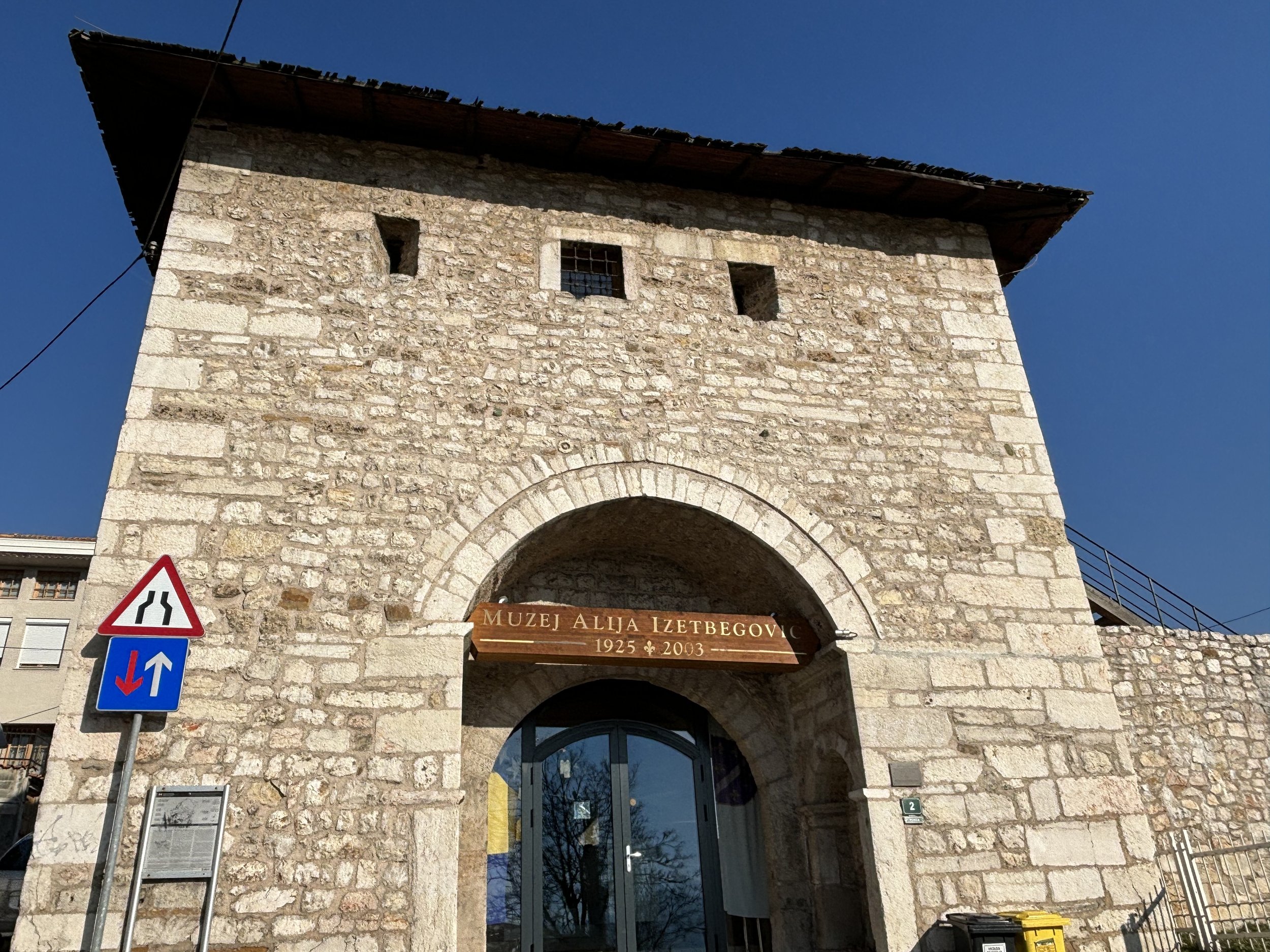KOVAČI
© John Bills
Maybe I’m dense, but Kovači confuses me. It sort of snakes around Vratnik, and the lines between the two can be a bit blurry, so I apologise profusely if anyone is irritated to see a Vratnik institution here and vice-versa. On the other hand, if you’re irritated by a neighbourhood guide, I’d suggest a walk. There isn’t a whole lot to say about Kovači, other than it exists as a small neighbourhood on the right bank of the Miljacka, bridging the divide between Baščaršija and Vratnik. The short slope is one of the most popular tourist spots in the city, with increasingly famous cafes serving suspiciously Instagram-friendly beverages. The area is arguably best known for being the final resting place of Alija Izetbegović and its immense martyr’s cemetery and monument.
WHAT TO SEE AND DO
© BreizhAtao // Shutterstock.com
Žuta Tabija (Yellow Fortress)
The so-called Yellow Fortress sits on the border between Kovači and Vratnik, but most visitors to this gorgeous viewpoint aren’t bothered about neighbourhood boundaries. The remains of this cannon bastion constitute the most popular lookout spot in the city, with stunning views of Sarajevo’s centre spreading out below. The fortress was constructed in the first half of the 18th century and has been damaged and rebuilt several times, which isn’t all that surprising, being a cannon fortress and all that jazz. The walk to the fortress from the city takes you past the vast Kovači Cemetery, the final resting place of Alija Izetbegović. You can also walk up Ulica Jekovac, the name of a fictional pop star created by friends of mine. The choice is yours. Jekovac
© John Bills
Alija Izetbegović Museum
As the name suggests, this museum is dedicated to the life and times of Alija Izetbegović, the Šamac-born lawyer and philosopher who became the first president of an independent Bosnia and Herzegovina. He was the man in charge during the war, the defender of Bosnia, although the divided nature of the state means his legacy is complicated. The museum focuses on Izetbegović the man and Izetbegović the commander, with plenty of photos and documents from his life. Ploča, +387 33 574 271
© John Bills
Kučuk Katib Muhijdinova Mosque
This delightful mosque on the naive slopes dates back to the early 16th century and can be considered relatively representative of Sarajevo’s formative Islamic years. The Kučuk Katib Muhijdinova Mosque (you can also call it the Nadmlini Mosque, after the street it sits on) is another in the long line of “Mosques That Get It Right,” performing its functions without ceremony surrounded by houses and community spots. The minaret is bone white with a fetching green trim. Nadmlini
© John Bills
Mevlevi Tekija
Sarajevo’s first tekija (an Islamic religious building, not a mosque, but a sort of meeting place) has quite a history. It was constructed in 1462 (or 1463, but there we go) and housed an unknown (to us) Dervish order. Your travel writing tsar Evliya Celebi called it a “place like a heaven,” which is something of a stretch, although it is a gorgeous structure on the road leading to the Žuta Tabija. I almost always stop here to catch my breath because I am woefully unfit. The tekija was destroyed by Eugene of Savoy’s forces in the late 17th century, reconstructed in 1781, and then destroyed again by the Yugoslav authorities in 1957. Like the allegorical phoenix, it rose again in 2013, financed by the Turkish municipalities of Selçuklu. Visits are possible, so ring ahead and see what you can get organised. Jekovac
© John Bills
Kovači Martyrs Cemetery
The Kovači Martyrs Cemetery is the main resting place for the brave souls who perished defending the city during the war. The cemetery sits gently on the slopes heading towards Vratnik, above town, without dominating it. Alija Izetbegović is also buried here in a relatively unassuming grave, although the nearby museum takes care of the ceremony. Širokac
© John Bills
Čaršijska Mosque
The second-oldest domed mosque in the city, the Čaršijska Mosque is in a somewhat strange position these days. Not literally, as it remains in the heart of hustle and bustle, as it always did, but its role as a vital cog in the wheels of everyday life has diminished somewhat, as other mosques have taken on more influence and the shining lights of neighbouring businesses have grown increasingly blinding. Not to worry, as the work of this mosque is long done, dating to its construction in 1526. It is also known as the Muslihdin Čekrekčija Mosque, after the individual who built it, and it can now settle into a comfortable chair and remember its knowledge and skills, the good child who prays for it, and its enduring good deeds. Kovači 6
BREWS, BOOZE AND BITES
© John Bills
As mentioned, Kovači is well-known to tourists for its eponymous sloping street, home to a handful of excellent cafes, teahouses and bars, although they are increasingly busy with every passing year. Ministry of Ćejf (Kovači 26, +387 61 777 254) and Čajdžinica Džirlo (Kovači 16, +387 62 755 866) get the most attention. Yes, ćejf, although that has nothing to do with the sort of chafe we are used to back home. I used to stop by Birtija (Kovači 5, +387 61 325 425) for a beer fairly often and have enjoyed all the sports I’ve watched at Dubliner Irish Pub (Tahčića sokak 5, +387 60 33 97 533).
SLEEPING
© John Bills
There are plenty of apartments and hotels in and around this area, which makes plenty of sense. After all, Baščaršija is just a short walk down the hill, making this prime real estate for would-be hoteliers. Hotel Kovači (Kovači 12, +387 33 573 700) and Hotel Aziza (Saburna 2, +387 33 257 940) are among the best options.








